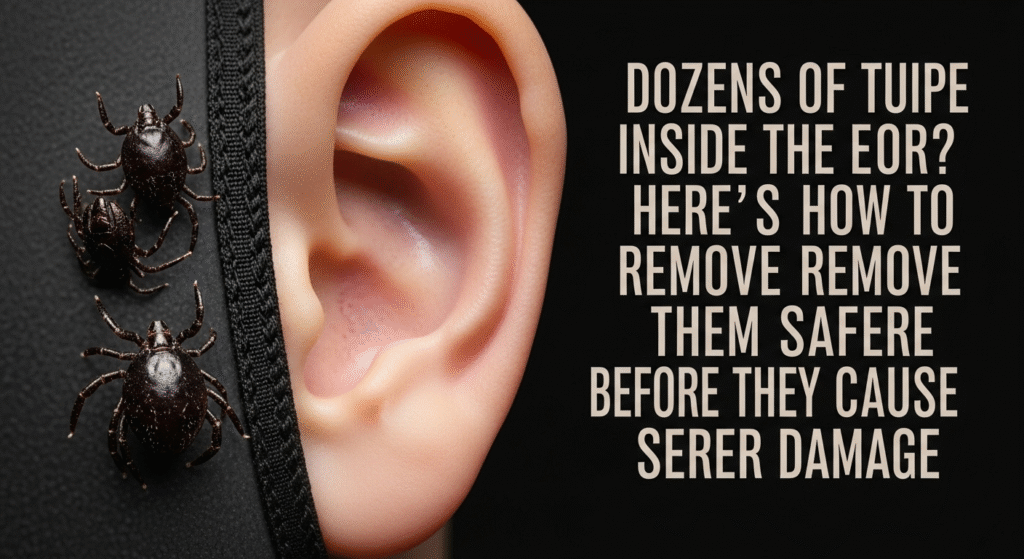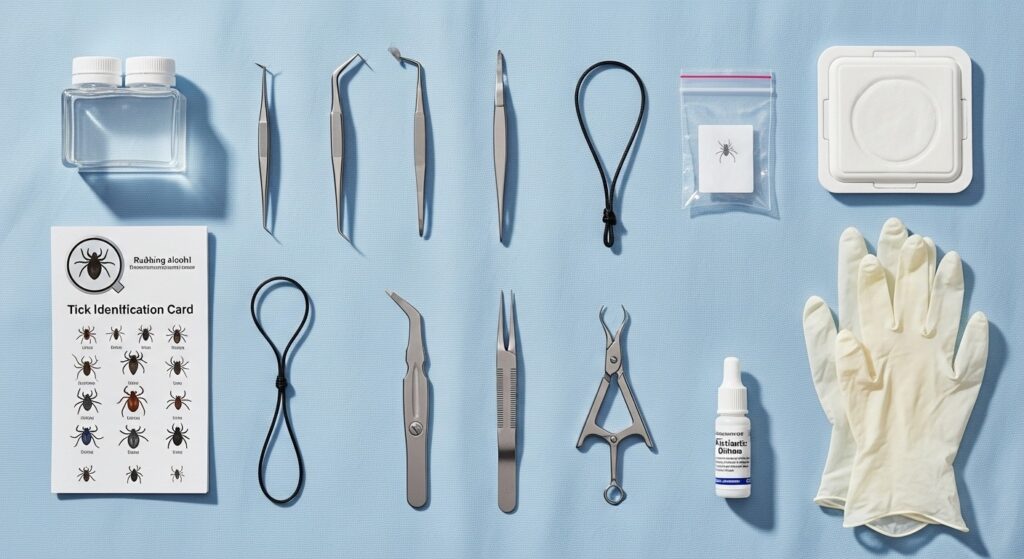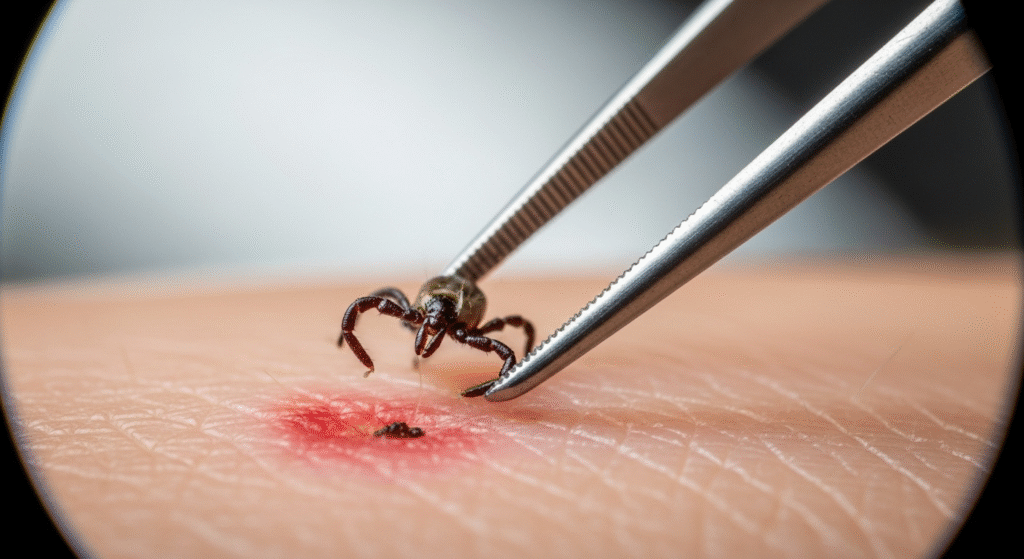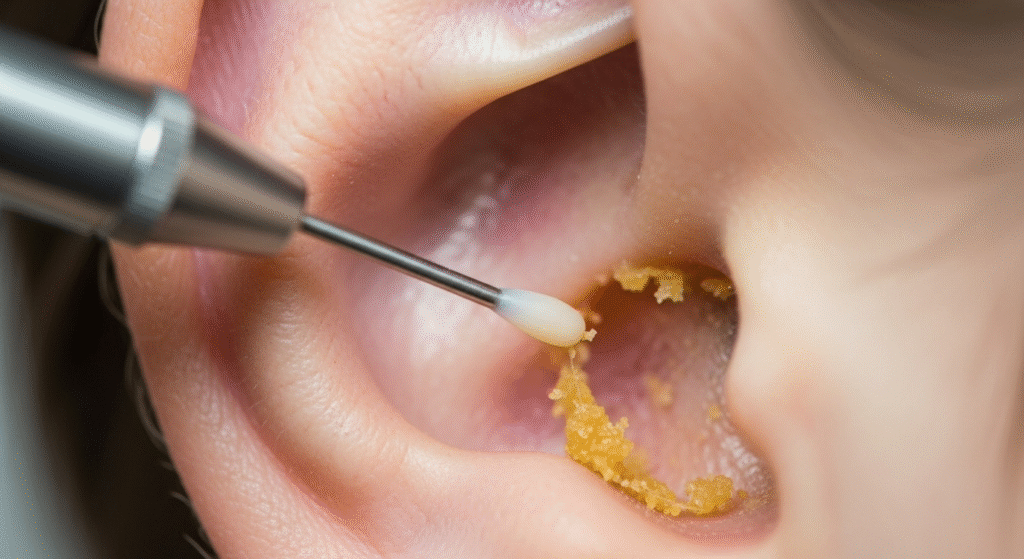“Dozens of Ticks Inside the Ear? Here’s How to Remove Them Safely Before They Cause Serious Damage”

Imagine sitting under a tree, enjoying a peaceful afternoon… and suddenly you feel an odd crawling sensation inside your ear. At first, you think it’s a fly. But when you check in the mirror, your stomach drops — your ear isn’t just occupied by one tick. It’s a tiny blood-sucking army.
This isn’t just gross — it’s dangerous. Ticks feed on blood and can transmit deadly diseases like Lyme disease, babesiosis, ehrlichiosis, and Rocky Mountain spotted fever. In extreme infestations, they can even cause hearing damage or paralysis.
Whether it’s one tick or a cluster (like in the video that shocked millions online), you need to remove them the right way. Here’s the step-by-step expert guide that will save your health — and maybe your ear.
1. Do NOT Panic – But Understand the Risk

Ticks latch on firmly with tiny barbed mouths. If you rip them off in panic, you risk leaving their head buried under your skin. That’s like leaving a dirty splinter inside a wound — it can fester, swell, and turn into a nasty infection. Calm hands mean clean removal.
2. Gather the Tick-Extraction Arsenal

Before you touch the tick, arm yourself:
- Fine-tipped tweezers (the sharper the tip, the better)
- Antiseptic solution (alcohol, iodine, or hydrogen peroxide)
- Gloves (ticks can transmit disease through skin cuts)
- Flashlight or headlamp
- Magnifying glass (for precision work)
- Small airtight container (to keep the tick for medical testing)
3. Never Fall for Internet Myths

You’ve probably heard of smearing petroleum jelly, burning the tick with a match, or drowning it in oil.
Forget it.
These methods don’t “make ticks back out” — they actually stress the tick, causing it to vomit disease-carrying fluids into your bloodstream.
4. Position Yourself for Surgical Precision

If possible, get someone to help. Have them hold the flashlight and tilt your head so the ear is fully visible. Remember — in cramped spaces like the ear, even a millimeter counts.
5. The Removal Moment – Steady as a Surgeon

With your tweezers:
- Slide them gently under the tick’s body, aiming to grab right where it meets the skin.
- Pull upward in a slow, firm motion.
No twisting, no jerking. Imagine you’re lifting a tiny nail from wood — slow and steady wins.
6. Check for Leftover Mouthparts

Sometimes, the tick’s body detaches but its head remains buried. Under a magnifying glass, check for black specks in the skin. If present, carefully remove them with tweezers — or visit a doctor to prevent an embedded infection.
7. Clean the Battlefield

After removal, cleanse the ear thoroughly with antiseptic. This not only kills germs but also prevents the wound from becoming an entry point for bacteria.
8. Save the Tick – Yes, Really

Seal it in a container with rubbing alcohol. Why? If you develop symptoms later, doctors can test the tick for diseases, giving you a faster diagnosis.
9. Monitor Your Health Like a Hawk

Over the next 30 days, watch for:
- Red bullseye-shaped rash
- Unexplained fever
- Muscle or joint pain
- Swelling or pus in the ear
These may signal a tick-borne illness. Early treatment can be lifesaving.
10. Stop Future Tick Invasions

- Avoid sitting in tall grass or leaning against tree trunks without protection.
- Wear hats and keep long hair tied up when hiking.
- Spray clothing and skin with DEET-based repellents.
- Do a full-body tick check after outdoor activities — especially behind the ears, underarms, and hairline.
Final Words
Seeing dozens of ticks packed into someone’s ear is enough to make anyone shudder — but the danger is real. Removing them improperly could cost you your health, your hearing, or even your life. Armed with the right tools and knowledge, you can turn a nightmare into a minor inconvenience.
